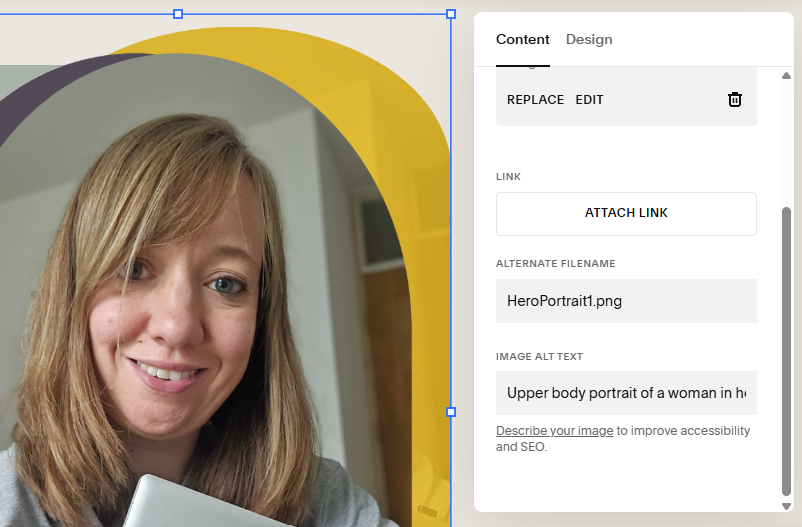5 Easy Wins to Improve Your Squarespace Website (and Boost SEO)
A powerful website is essential in today’s business landscape. With platforms like Squarespace, many business owners choose to DIY - but that often means key features get overlooked. These small gaps can have a big impact on performance, visibility, and user experience.
Whether you’re building your first site or refining an existing one, here are 5 easy wins to help your Squarespace website shine - for users and search engines alike.
1. Organise Your Website Navigation
Why? Users need to be able to find their way around your website - there is no point writing content without an audience to read it!
In this digital age, users have a short attention span, this means we need to ensure that our navigation is clear and easy to use. This improves the user experience of your website.
How? Categorise your pages so they can be found in clear and distinct groups. Do not overload your top menu.
2. Remember Descriptive Image Alt Tags
Why? Alt Tags provide a written description to describe what is contained within the image. They are crucial for times when the image cannot be consumed - i.e. accessibility and SEO.
How? Squarespace provides a box for alt text whenever an image is used.
Open the Squarespace image dialog - double click your image.
Scroll to the bottom of the content panel.
Enter a helpful description in the Image Alt Text box.
Example of the Squarespace Image Dialog.
3. Test Your Website on Both Desktops and Mobiles
Why? Since 2016, browsing the internet on a mobile has been more popular than any other device. It is reported that around 62.5-64% of all website traffic comes from a mobile device (correct as of 2025). Therefore it is important that we ensure our websites are responsive and work on various device sizes.
How? Squarespace offers a handy option to switch between desktop and mobile mode while in the editor. This means we can easily check how it will be displayed in both formats.
NB: It is still important to test your website on an actual mobile device to ensure all functionality, such as button taps, works.
Screenshot of the desktop/mobile view buttons in the Squarespace editor.
4. Optimise Your Image Sizes
Why? Images can be a large resource drain on your website. The larger the image size, the more to be loaded and so it can have a real impact on performance speeds. Users will not wait for inefficient websites to load and it also has an effect on SEO.
How? You should aim for each image on your website to be under 500KB. Luckily there are extensions and tools that will help to achieve this.
Examples of such tools are:
TinyPNG: external website where you can upload images and it will compress them before you upload to Squarespace.
SEOSpace: external website and Squarespace extension used to assess the SEO performance of your Squarespace website. Will highlight any large images and compress them for you.
TinyIMG: a Squarespace extension used to optimise images and will help compress files.
5. Use Suitable Headings to Give Structure
Why? Headings are a powerful tool to not only help users with readability of your page, but also to improve SEO and AEO (Answer Engine Optimisation - AI!). Headings should be used thoughtfully and not just to prettify text.
How? Every page of your website should have one Heading 1 (H1) to define clearly what the page is about. You should then use subsequent headings (Heading 2 - H2, Heading 3 - H3, etc) to organise the rest of the content semantically.
Ready for a strategic Squarespace site in just 2 weeks? Explore my fast-track website package designed for service providers who want clarity, confidence, and conversion.


